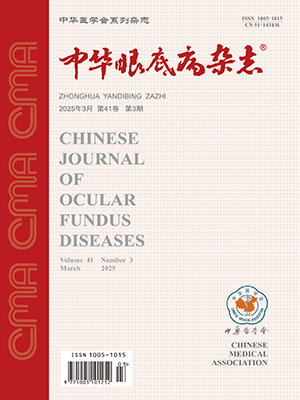Objective To observe the effect of exogenous basic fibrob last growth factor (bFGF) on apoptosis of cultured human retinal pigment epithelial (RPE) cells exposed to visible light,and determine the role of bFGF, fibroblast growth factor receptor 1 (FGFR1),bcl-2 and caspase-3. Methods 2000±500) lx cold white light was used. Exogenous bFGF was utilized during culture. Annexin annexin V-fluoresce in isothiocyanate/propidium iodium (V-FITC/PI) labeling,flow cytometry, Immunocytochemical staining, enzyme associated absorb examing and reverse transcriptional polymerase chain reaction (RT-PCR) were used to determine the apoptosis, the expression levels of bFGF, FGFR1, bcl-2, as well as the activity of caspase-3. Results No protective effect of bFGF was observed under the concentration 5 ng/ml.A significant inhibition of apoptosis was found in 10 ng/ml and 20 ng/ml groups (P<0.05). The upregulation of bcl-2 was observed in bFGF (10 ng/ml, 20 ng/ml) protreated groups(P<0.01).Compared to no light exposure group,all light exposure groups (including bFGF pro-treated) had higher endogenous bFGF and FGFR1 levels (P <0.05), and the increase was concentration dependent.The bFGF and FGFR1 levels were higher in exogenous bFGF applied ( gt;5 ng/ml) groups than light exposure groups(P<0.05). The caspase-3 activity was significantly inhibited in bFGF (10 ng/ml) pro-treated groups. Conclusions Human RPE cells exposed to visible light were rescued by application of exogenous bFGF in vitro.The probable protective mechanism of bFGF partly is directly binding to FGFR1 or potentiating endogenous bFGF autocrine loop,to upregulate bcl-2 and to inhibit caspase-3 activation. (Chin J Ocul Fundus Dis,2003,19:24-28)
Citation: ZHOU Yongdong,YAN Mi,ZHANG Junjun. The effect of bFGF on apoptosis of cultured human retinal pigment epithelial cells exposed to visible light. Chinese Journal of Ocular Fundus Diseases, 2003, 19(1): 24-28. doi: Copy
Copyright © the editorial department of Chinese Journal of Ocular Fundus Diseases of West China Medical Publisher. All rights reserved




